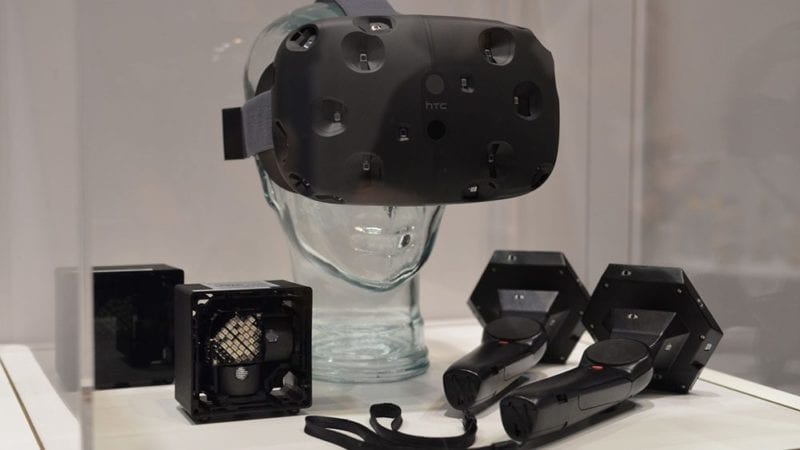After today’s announcement of the PlayStation VR’s price and release window, all of the big VR players are making their way to the final stretch. The Oculus Rift and HTC Vive are all set, with the Rift releasing in just a month. The first wave of virtual reality is quickly approaching, and there are a lot of factors to consider. One of the most important of these factors is comfort.
You may have already noticed that all of these devices are worn on your head. Your neck will do all of the heavy lifting as it takes the brunt of the weight of not only your cranium, but of some high tech gadgetry as well. Better graphics and a faster processor are important, but none of it matters if you can’t even wear it for long without pain.
Naturally, most individuals who are interested in the new tech won’t buy all three just to see which is the best fit for them. That’s just not very cost effective. Also, hands-on demos for something so sensitive and expensive won’t be as common as a PlayStation 4 setup is in most malls. Luckily, we’ve tried them all out for you.
While they all have their own specific perks (better graphics, larger library, etc.), they don’t all share the same feel when you put them on. Starting with the Vive, it is a bit heavy on the front. The cradle of straps that go over your head have a tight, secure fit. Don’t worry, it isn’t so tight that it cuts off your circulation. While playing though, it’s difficult to ignore the fact that you’re wearing a heavy computer on your face. After a few minutes, the sensation started to fade away, but still the discomfort was there.
The Oculus Rift suffers from a similar issue, although not as bad as the Vive. Oculus has been tooling away at the impending Rift VR headset for many years, so the company has been able to address a lot of the troubles that newer devices are currently dealing with. The Rift is relatively bulky when compared to its competition though, so that is something to consider.
The PSVR, however, is easily the most comfortable of the bunch. Placing the headset on requires a simple adjustment of a padded headband. Afterwards, you hit a button beneath the visor to adjust the distance from your eyes to help with focus, then you’re all set. This works great for people who wear eye glasses. The PSVR is extraordinarily comfortable, to the point that you don’t really feel like you’re wearing it.
Looking at the device, the visor is much larger than the piece that holds it in place. Yet there’s something about it that allows all of the weight to be dispersed so that you feel little to no pressure. Sony put a lot of effort into the feel of not only the experience while looking into a new world, but also how it feels for consumers putting it on.
There are many more factors to take into consideration when going to pick which one of these is worth your hard-earned cash, but comfort is high on the list for some potential customers. After all, how are you going to have those endless play sessions if you can’t even move around?
Which of the headsets will you be picking up if any? Is the comfort factor a big deal in your decision? Let us know in the comments below.
Check Out More
- Dangle off the Edge of a Cliff in VR with Everest
- PlayStation VR to Have 50 Games by the End of the Year
- PlayStation 4 Games and Netflix Can be Played on PSVR







Published: Mar 15, 2016 10:59 pm